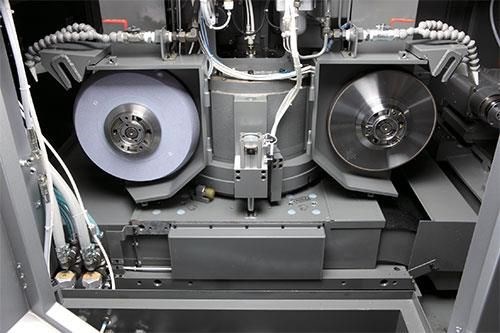CNC Grinding with Less Labor
As difficult as it is to find skilled machining personnel in general, finding skilled grinding personnel is more difficult still.
Share







As difficult as it is to find skilled machining personnel in general, finding skilled grinding personnel is more difficult still. Meanwhile, many shops are doing more grinding than ever, as they respond to tight lead times by bringing grinding in-house. How can shops minimize their need for skilled labor in grinding?
In this article, Shane Farrant, national product manager for Toyoda Machinery USA, and Steve Earley, the company’s proposal engineering supervisor, suggest two ways:
1. In-process gaging. This is one of the most accessible ways to reduce human intervention in grinding, they say. Automatic gaging of the workpiece allows the CNC to respond to measurement trends resulting from the wheel’s changing diameter. With the process changing offsets on its own to maintain consistency, the wheel might not have to be dressed as often.
2. Universal grinding machine. This is a much bigger step, but potentially a valuable one. A universal machine makes it possible to switch between multiple grinding wheels in the same setup, so ID and OD grinding can be performed on the same machine, or rough grinding and finish grinding can be performed within a single cycle—with no extra handling or setup between these steps.
One step that might not be the answer is switching to a more expensive CBN wheel, they say. CBN’s effectiveness is material-dependent. It is good for grinding hard metals. In soft metals, the material might load the wheel to the same extent as a conventional wheel, resulting in a process in which dressing is just as frequent.
Related Content
-
5 Tips for Running a Profitable Aerospace Shop
Aerospace machining is a demanding and competitive sector of manufacturing, but this shop demonstrates five ways to find aerospace success.
-
How to Mitigate Chatter to Boost Machining Rates
There are usually better solutions to chatter than just reducing the feed rate. Through vibration analysis, the chatter problem can be solved, enabling much higher metal removal rates, better quality and longer tool life.
-
Inside the Premium Machine Shop Making Fasteners
AMPG can’t help but take risks — its management doesn’t know how to run machines. But these risks have enabled it to become a runaway success in its market.















